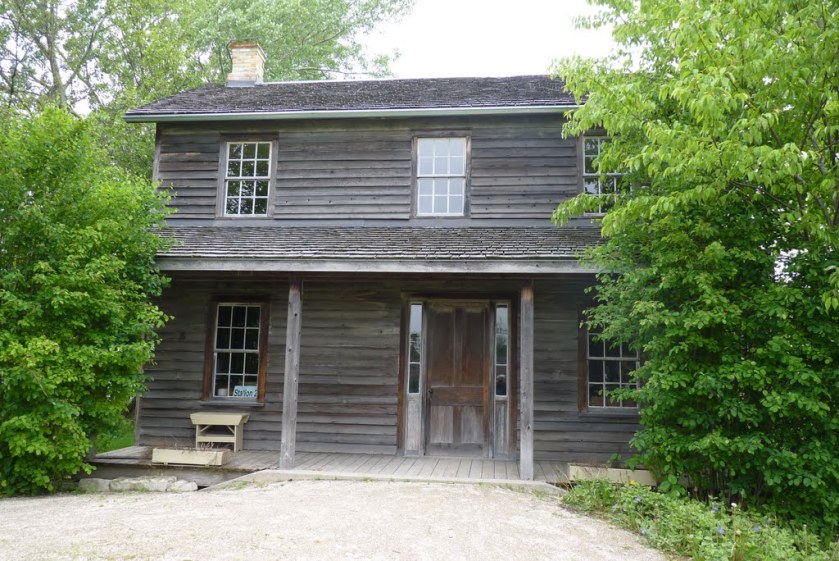Josiah Henson – Spiritual Leader, Author, Founder
Josiah Henson, spiritual leader, author, founder of the Black community settlement at Dawn, Upper Canada/Canada West (born 15 June 1789 in Charles County, Maryland; died 5 May 1883 in Dresden, ON). Born enslaved, Henson escaped to Canada in 1830. He founded the Dawn Settlement near Dresden, Upper Canada, for American fugitives from enslavement. He and a group of associates organized a trade-labor school, the British-American Institute. He was active on the executive committee until the Institute closed in 1868. Henson served as Dawn’s spiritual leader and patriarch and made numerous fundraising trips to the United States and England. He published his autobiography in 1849, and he was allegedly Harriet Beecher Stowe’s model for the lead character in her novel Uncle Tom’s Cabin (1852).
Henson first tried to buy his freedom in 1825. His owner, Isaac Riley, needed money and sent Henson to escort a group of 18 enslaved persons to Kentucky. While in transit, the group could easily have escaped to Ohio and made themselves free, but Henson believed his owner’s offer of manumission (ownership of himself). Consequently, he would not allow the escape and was later disappointed when he realized that his owner had no intention of giving him his freedom. He was taken, along with his wife and four children, to New Orleans, Louisiana, in 1829 to be sold. Henson and his family fled to Upper Canada, reaching the Niagara Peninsula on 28 October 1830.
Henson and his family settled near Dresden, Upper Canada. With his leadership skills, he was able to command the support of abolitionists who helped him create the Dawn Settlement, a place for refugees from enslavement to gain the education and skills necessary for self-sufficiency and self-determination. It was Henson’s belief that Black persons needed to learn skills within their own community. In 1841, Henson and his partners purchased 200 acres of land, and in 1842, they established the British-American Institute. A central focus of the settlement, the school was created for students of all ages and was sustainably designed to train teachers while providing general education and trade-labor instruction to members of the community. The community of Dawn developed around the Institute, with many residents farming, attending the Institute, and working in sawmills, gristmills and in other local industries.
After the Emancipation Proclamation of 1863, some members of the community returned or moved to the United States, though many remained at Dawn.
Henson’s autobiography The Life of Josiah Henson, Formerly a Slave, Now an Inhabitant of Canada (1849) was published in order to raise funds for the continuation of the Dawn Settlement. Many consider Henson’s autobiography to be the inspiration for the lead character in Harriet Beecher Stowe’s novel, Uncle Tom’s Cabin.
Some have expressed concern over Josiah Henson as the model for the Uncle Tom character in Beecher Stowe’s novel, Uncle Tom’s Cabin. Though written and published as an anti-slavery text, the book portrayed Black persons in a stereotypical manner.

Today’s Sources:
* CBC News Canada http://www.cbc.ca/news2/interactives/black-history-month/
* The Canadian Encyclopedia http://www.thecanadianencyclopedia.ca/en/article/josiah-henson/


A interesting piece of information, John. The link to Uncle Tom’s Cabin was unexpected to me.
LikeLiked by 1 person
It is amazing what gems I’ve come across in this series. Thanks, Robbie.
LikeLiked by 1 person
“Some have expressed concern over Josiah Henson as the model for the Uncle Tom character in Beecher Stowe’s novel, Uncle Tom’s Cabin. Though written and published as an anti-slavery text, the book portrayed Black persons in a stereotypical manner.”
Hm… I think that maybe lacks historical perspective. She was writing for the culture of her time, was she not? We have a tendency today to look back at history and want to judge it from our perspective. “To Kill a Mockingbird” is one of my favorite books. I wasn’t going to read “Go Set a Watchman” because I had heard so many negative things like that about it. I finally did. The book was certainly not up to Harper Lee’s standards (which I assume is why it was never published in her lifetime), and it took me getting 4/5 of the way through the book to get the drift of what she was trying to say. It gave me a lot to think about. Historical perspective is always so important. Just my opinion, however…
LikeLiked by 1 person
I absolutely agree! Judging a text from an earlier age using our own standards of measurement is grossly unfair! I used to warn my history students about making this kind of error. Historical perspective is key. Thanks, Cheryl!
LikeLike
Reblogged this on Opher's World and commented:
It is always inspiring to read about people who succeed against all the odds.
He might well have been the inspiration for Uncle Tom’s Cabin. That doesn’t detract.
As for that book – it is now considered to be almost a cartoon-like stereotyped characterisation but in its time it was intended to be an inspiring book for abolition of slavery. Time gives many of the classic books darker elements of racism and misogyny. They were products of the society that spawned them. I recently read De Foe’s Three Muskateers and was shocked by the gross misogyny contained in it.
LikeLiked by 1 person
Thanks for the reblog, Opher!
LikeLike
A great life. I think Uncle Tom’s Cabin was a book of its time. It had good intentions.
LikeLiked by 1 person
I think it did as well. I’ve often wondered what people a century from now will think about the way we write about contemporary issues today. Thanks, Opher.
LikeLike